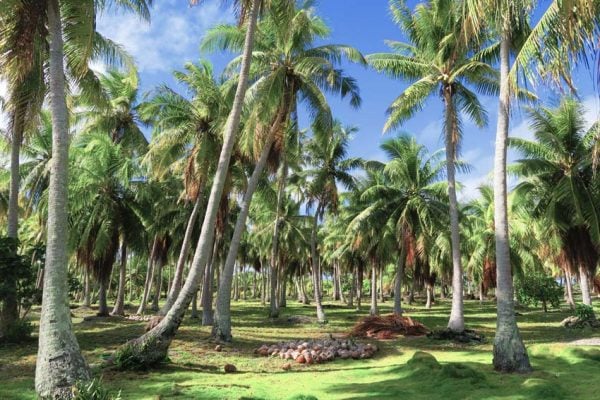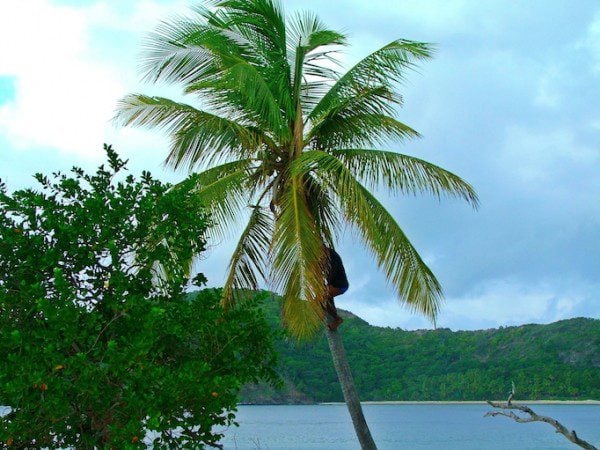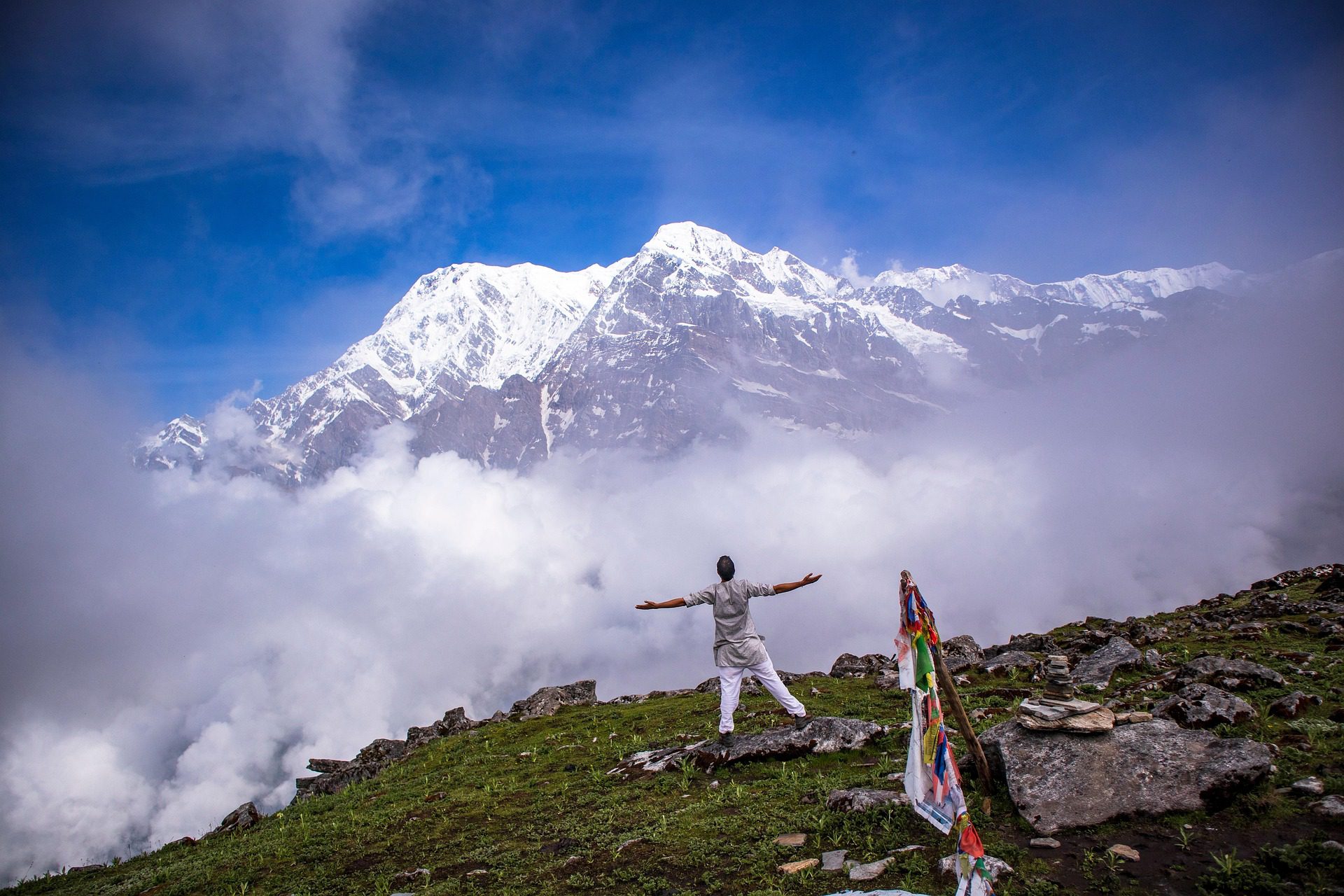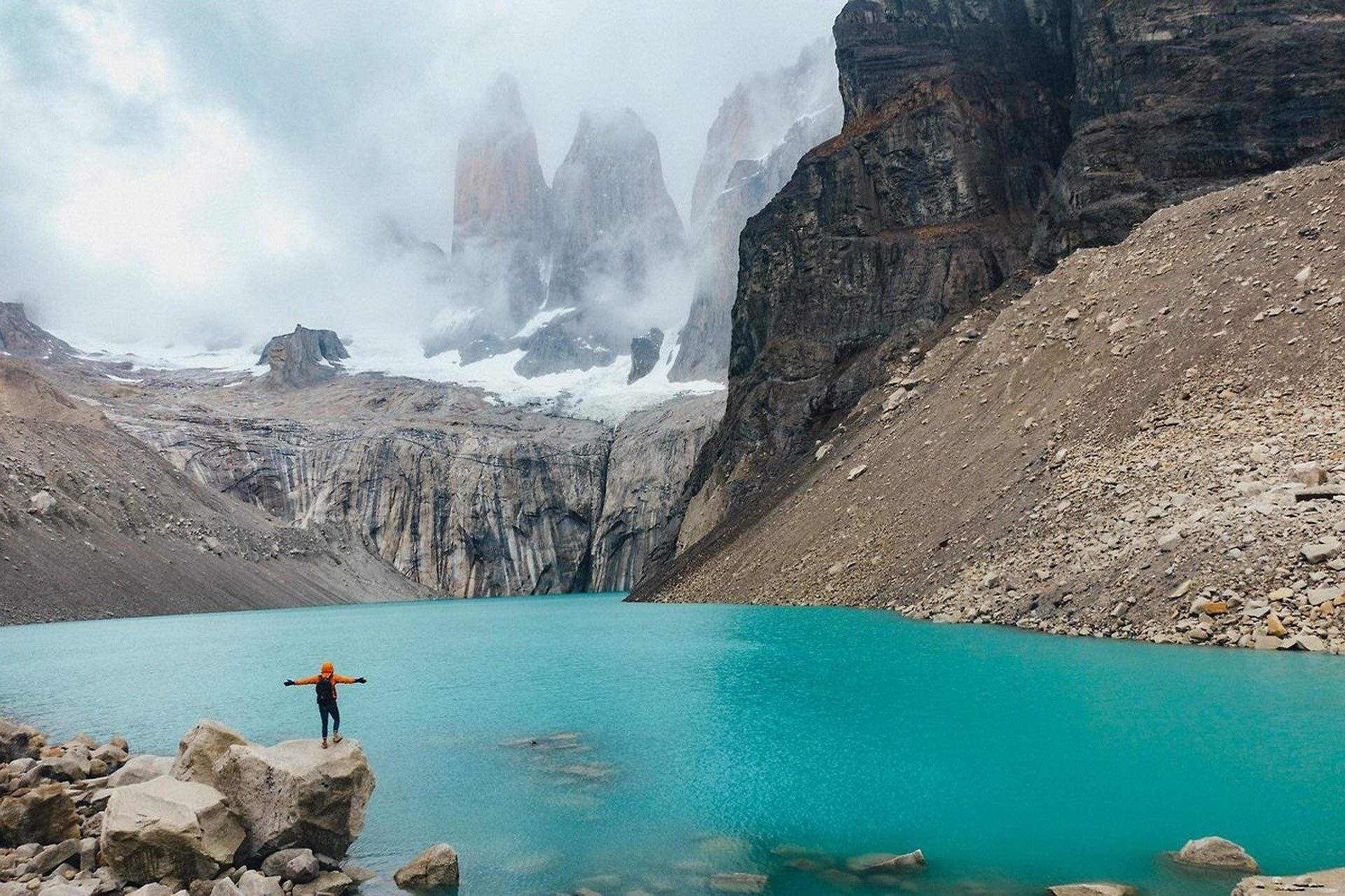God’s Greatest Piece Of Artwork: Ofu Beach In American Samoa
Only 123 km’s separate Samoa from it’s little sister to the east – American Samoa. With all the similarities between the two, life could not be any different when Uncle Sam is involved. American Samoa is also home to one of the most beautiful tropical islands in the entire world, making the short yet expensive trip that much more tempting. In this weekly update from the South Pacific Islands, we’ll spend ten memorable days in American Samoa and get a taste for what paradise might look like.
Visiting American Samoa and thinking about heading to Ofu? Good for you! Here’s a detailed 10-day itinerary to help you plan your visit to paradise.
After three weeks in the country formerly known as Western Samoa, I took off on a tiny looking plane for the 40-minute ride to American Samoa’s capital, Pago Pago (pronounced Pango Pango). The two airports are so close to each other, yet I arrived more than a day earlier – things are so strange when crossing the international dateline. The flight was scenic on both ends, with great panoramic views of Upolu and American Samoa’s rugged coastline.
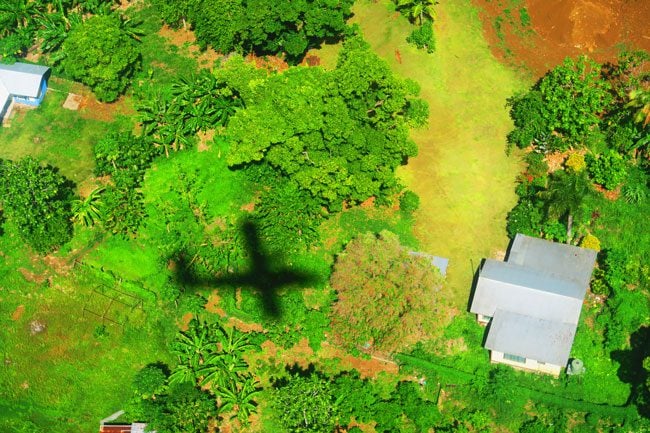
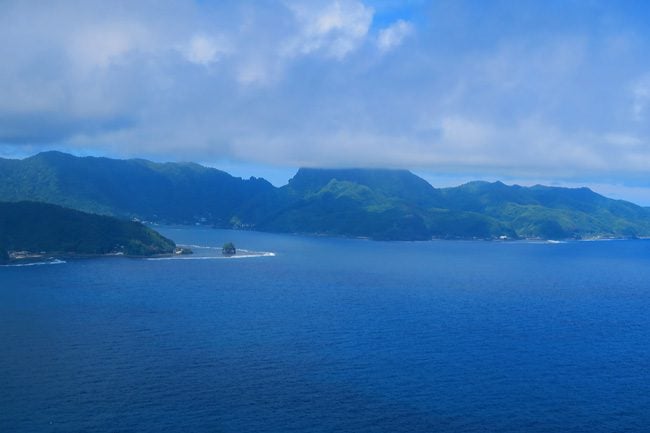
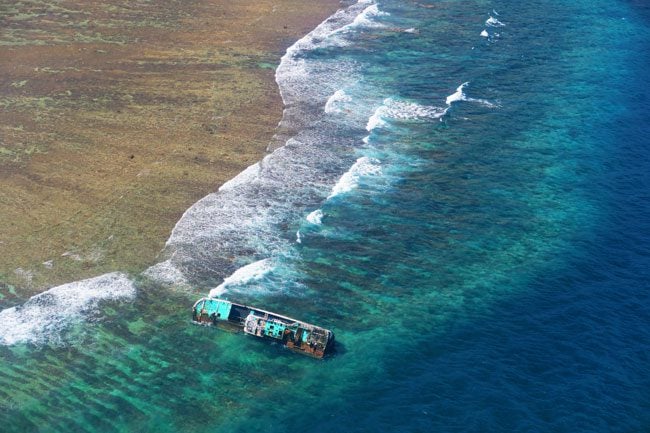
As soon as you land on the tarmac in Pago Pago, there’s no mistake to be made – the Yankees are here!
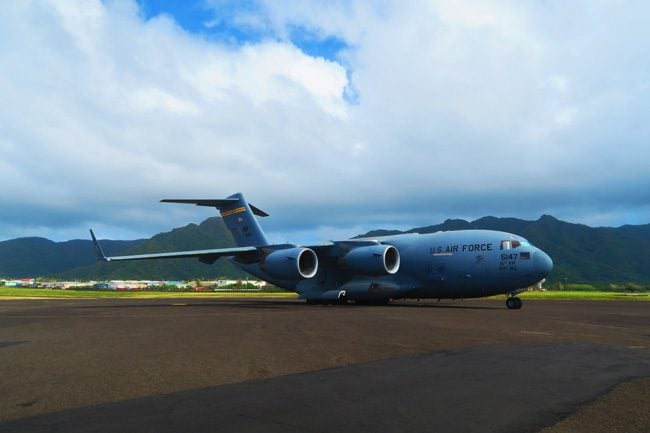
American Samoa 101
Before we get to our paradise adventure, let’s see what American Samoa is all about.
Pago Pago is on the main island with the cool sounding name Tutuila (tu-tu-ila). It’s an absolute gem of an island, with jagged mountains formed by extinct volcanoes rising out of the ocean. There’s not much room to maneuver on the island and the feeling is of ‘tightness’. Nearly all the population lives in the tiny flat space that’s left between the mountains and the ocean. Pago Pago is blessed with one of the finest natural harbors in the world. It’s deep, it’s huge and this is what it looks like from Mount Alava, one of the wonderful hikes in the National Park of American Samoa.
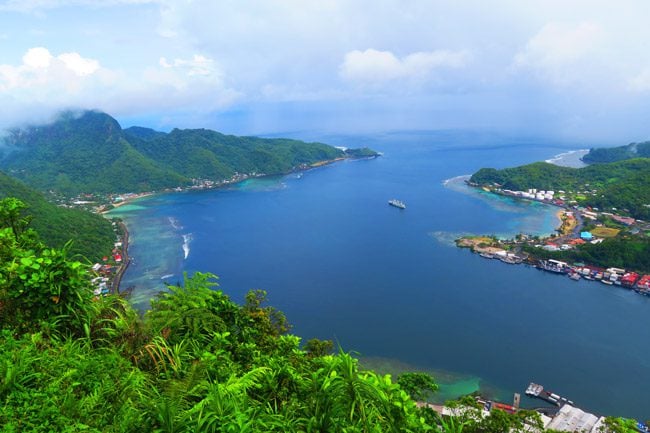
Uncle Sam’s story in Polynesia begins way back in the late 1800’s. By then, Christian missionaries were already ‘bearing fruit’ with the local population and global powers were starting to show interest in the South Pacific. The US set up a coal storage facility in Tutuila, followed by a Naval station to take advantage of the fine natural harbor. In 1900, the US struck a deal with local chiefs and Tutuila was ceded over to the Americans as an overseas territory. The outer islands followed soon after and that’s how American Samoa was born.
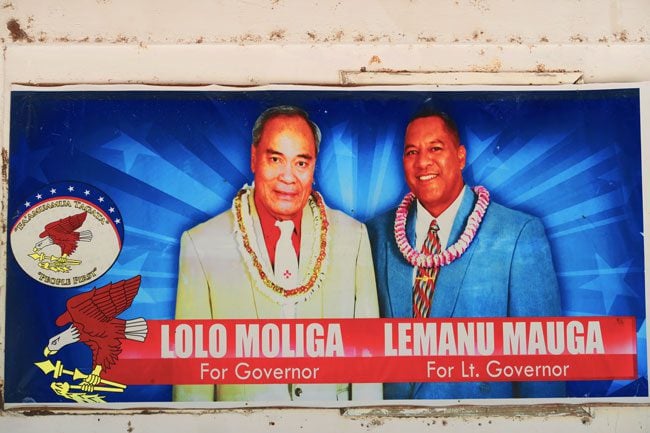
A win: win situation
This paid off for both sides. For the US, it now had a naval base in a prime location. During WWII, the Americans set up fortification to protect the harbor but the Japanese only attacked here once, though – launching a missile from a submarine that ironically landed on a Japanese-owned shop. Remember this small anecdote for later.
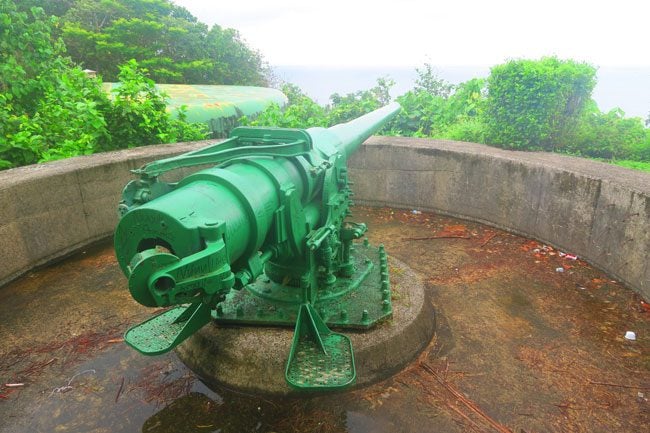
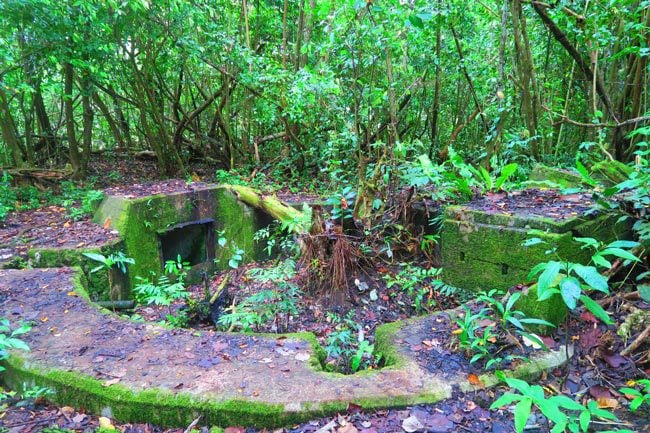
For the Samoans, they now had the financial backing of a superpower. The palagis (white Caucasians) brought with them: good infrastructure, schooling, healthcare, social security benefits, and capitalism. They also introduced air conditioning, which is a good thing because this place is so damn humid! These dramatic lifestyle changes also brought with them a serious obesity problem in American Samoa. The local McDonald’s drive-thru is almost always packed – but more on this topic later.
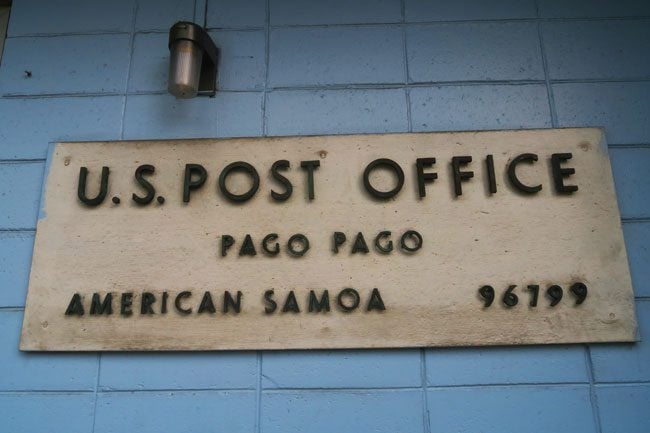
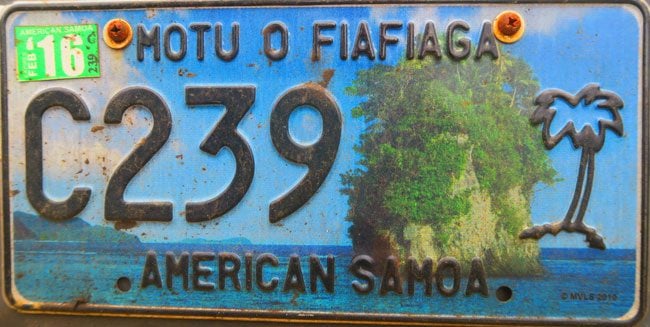
Walking around Tutuila, you can’t help it but notice the difference with neighboring Samoa. The fales (traditional Samoan huts) have been replaced with modern homes, everyone is driving an American made pickup truck and instead of rugby, children are playing American football! The only annoying thing is having to deal with those $1 bills… I just don’t get the logic behind that. One thing that is similar to the two Samoas is the bus. Riding the bus in Samoa is quite an experience, but in American Samoa, they took it one step further – converting small pickup trucks into the primary mode of public transportation. Cute, ah?
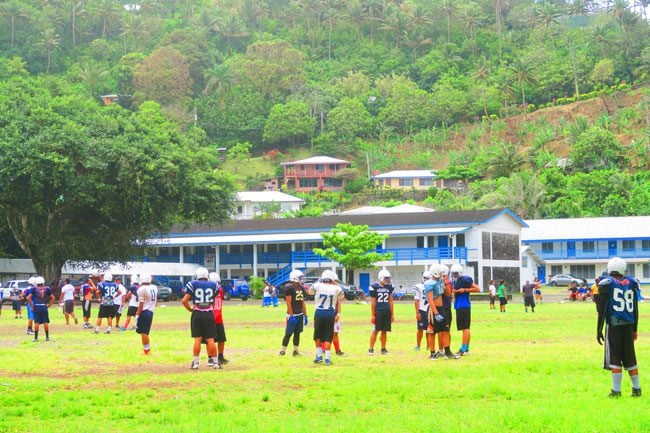
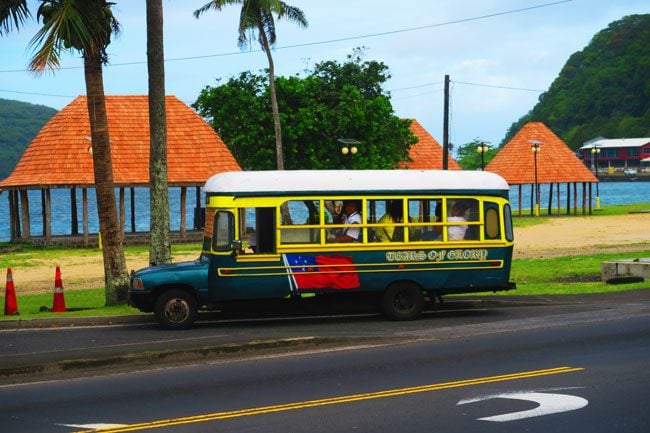
The US has created a semi-subsidized economy over here. It pours in a lot of money in annual funding and with the Navy long gone, had another trick up its sleeve. The port of Pago Pago is a global powerhouse in the tuna industry, yet tuna is not actually caught here… Tuna that is packaged in Pago Pago can enter US markets tax-free, so boats from around the Pacific use the mega-facilities in Pago Pago to prep everything up. So next time you open a can of tuna, check the label – it might have been packaged far away in American Samoa.
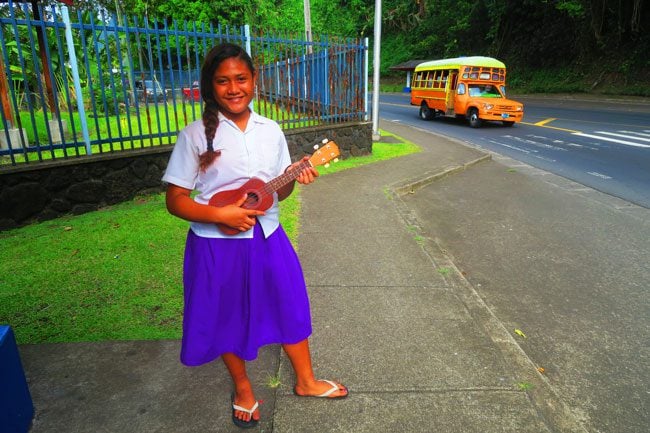
Sir, you’ve been bumped
After a day in Pago Pago, it was time to head to the real reason for my detour: the remote Manu’a Islands. They are only 110 km’s east of Tutuila, yet to the few lucky visitors who make it out here, they seem like a trip back in time. My destination was Ofu Beach, as off the beaten track as off the beaten track can get. It’s one of the most remote places you can travel to, and from what I’ve seen so far in my lifetime – it’s God’s greatest piece of artwork! You really need the big guy’s help to get here and a whole lot of luck… better to have both!
Getting to Ofu taught me a new concept in civil aviation: overweight flights (not to be confused with overbooked flights). I get to the local airport to check in for the short flight but find no one at the counter. There’s only one flight a week to Ofu and with all the time travel I went through coming from Samoa, thought I maybe got the dates mixed up. I finally found an agent who made a few phone calls and shockingly informed me: “you’ve been bumped off the flight, you’re not going to Ofu today”. WTF?!?
When all else fails… beg!
You see, American Samoans are some of the heaviest in the entire world. So when a few folks weighing between 150-200 kg’s check in before you, and the plane is tiny – there ain’t enough room for everybody! Too much weight on a small plane flying over the Ocean is not a good thing… What am I gonna do now? How could this happen? I came all the way to this remote place just to make this flight. What a disaster! I run to the airline office only to hear the same thing: “you’ve been bumped, the flight is overweight”. I started to plead with the agent, making suggestions I knew wouldn’t work, like asking passengers to leave some luggage behind. When that didn’t work I resorted to my last option… begging!
That seemed to get things moving, and after a few minutes of discussions in the back room, I was instructed to head back to the counter. I was told to only take my absolute necessities with me and leave everything behind. Now to make some ‘tough’ decisions: snorkel or sunscreen? Camera charger or clean underwear? As this drama was unfolding and the departure time getting ever so close, the weighting agent (this role really does exist) finally came to the conclusion that neither me nor my luggage weighed a lot. I was given the green light to get on the plane with all my stuff and nobody even checked my passport. I’m going to Ofu!
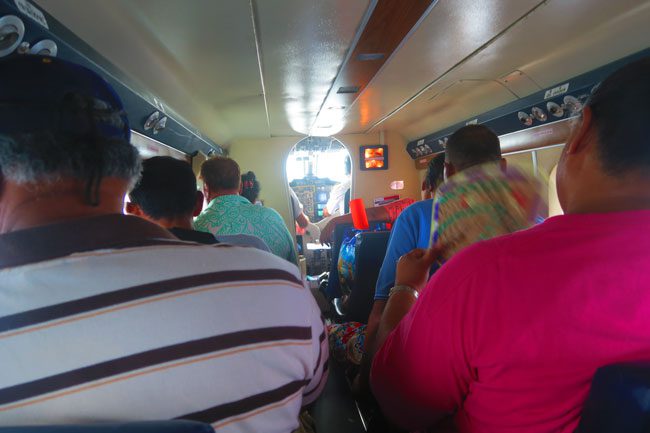
The moral of the story folks is to never take ‘no’ for an answer. Unfortunately for a vacationing Hawaiian couple that was scheduled for this flight, things didn’t work out and they did not make it on.
Touchdown in Ofu
Thrilled to make it on the coveted flight, we took off for a bumpy 30-minute journey to paradise. The feeling of landing at Ofu Airport can only be described as surreal. It’s actually not much of an airport, just a small building at the end of a super short runway. The plane needs every meter of that runway because beyond that it’s down to the reef. In the months of planning this short segment of my long trip across the South Pacific islands, I managed to score a place at Vaoto Lodge. The lodge is conveniently located… guess what? Right at the end of the runway! See you in a week captain, I made it to paradise!
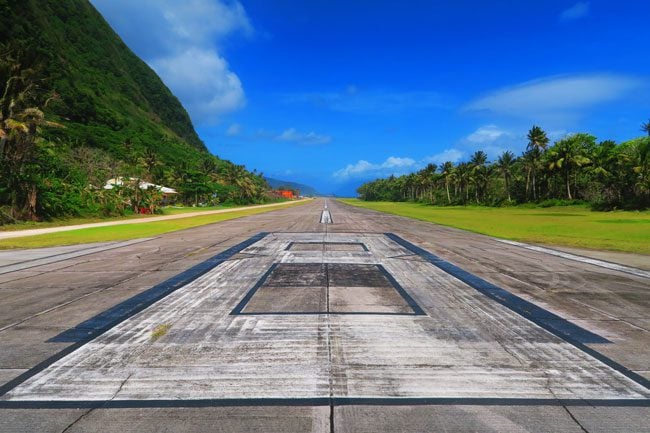
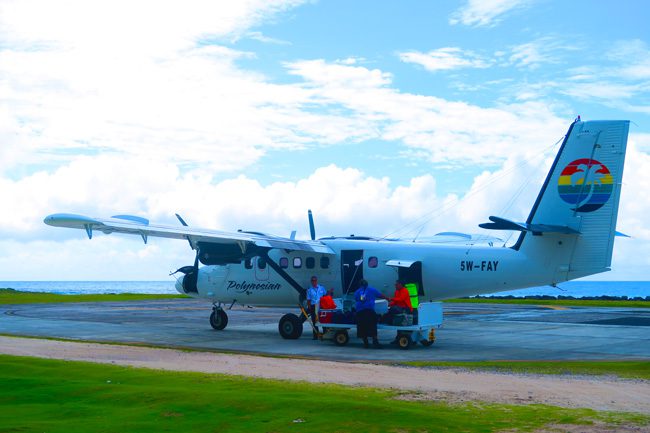
Keep scrolling to the next page to start exploring Ofu with me!
